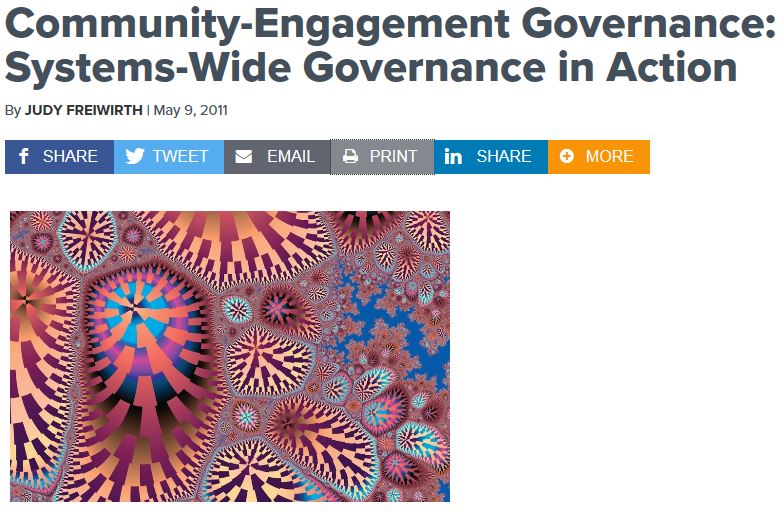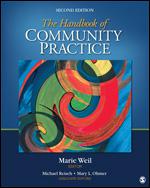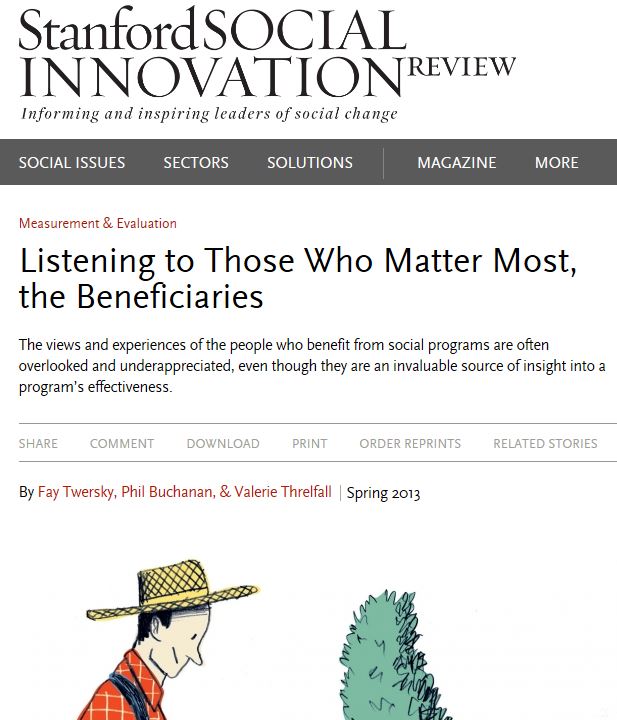
Beyond Marketing: Becoming a Constituent Centered Organization
This article provides concrete examples and ideas about engaging constituents in all facets of an organization.

Community-Engagement Governance
This article presents models for governance by stakeholders in contrast to traditional board model. In the Community-Engagement Governance framework, responsibility for governance is shared across the organization, including the organizations key stakeholders: its constituents and community, staff, and the board. Community-Engagement Governance is based on established principles of participatory democracy, self-determination, genuine partnership, and community-level decision making. It can be explored as a way to ensure that engagement is integrated into daily practice.

Overarching Questions
These questions are adapted from Cultural Competency: Organizations and Diverse Populations: The Handbook of Community Practice, Patricia St. Onge, 2013. It can be part of the process to assess organizational cultural competency. Questions are based on the belief that working towards organizational cultural competence is an on-going process that requires constant vigilance because the negative consequences of racism, sexism and oppression need on-going understanding and confrontation.

Listening to Those Who Matter Most
This article offers a basic understanding of the importance of including the views and experiences of beneficiaries.
